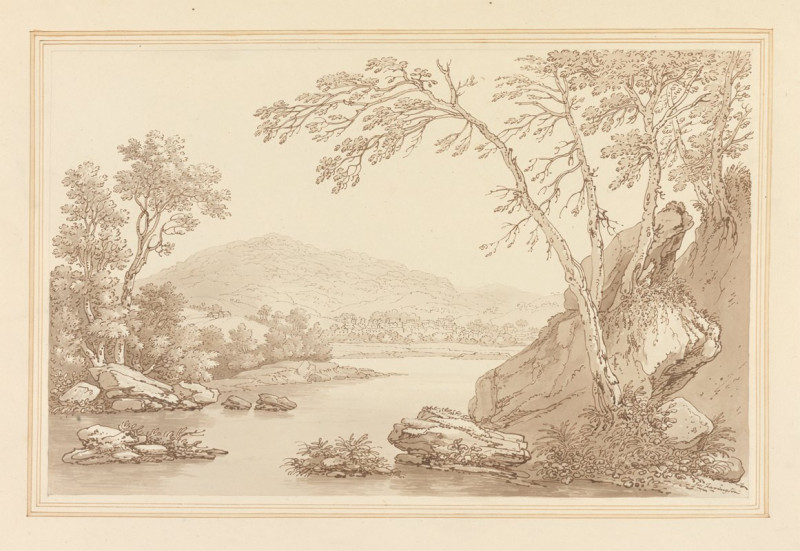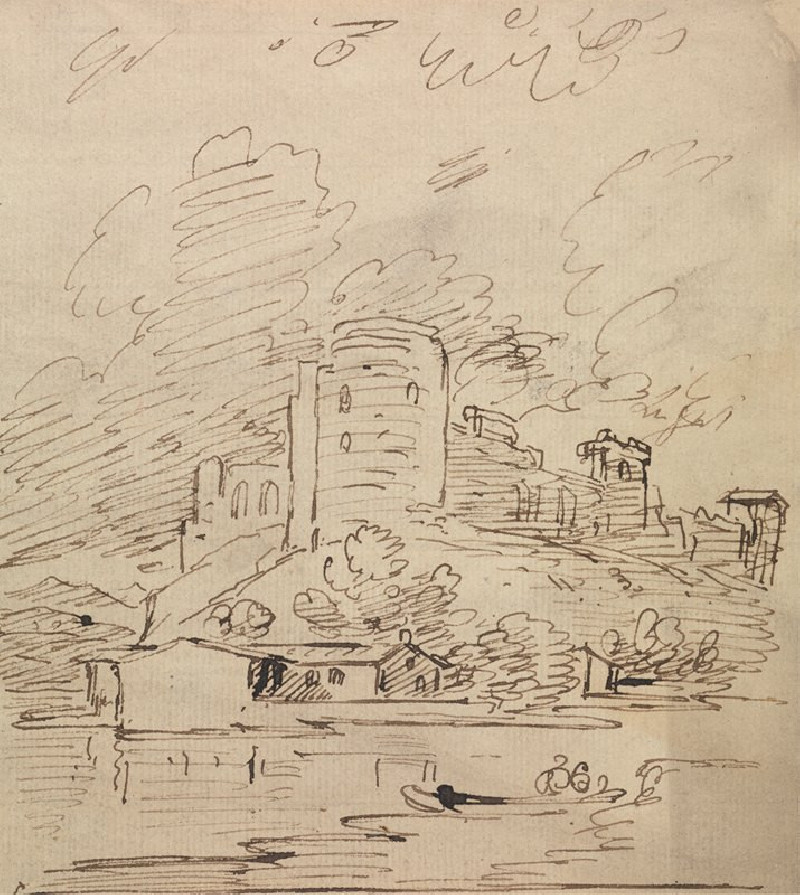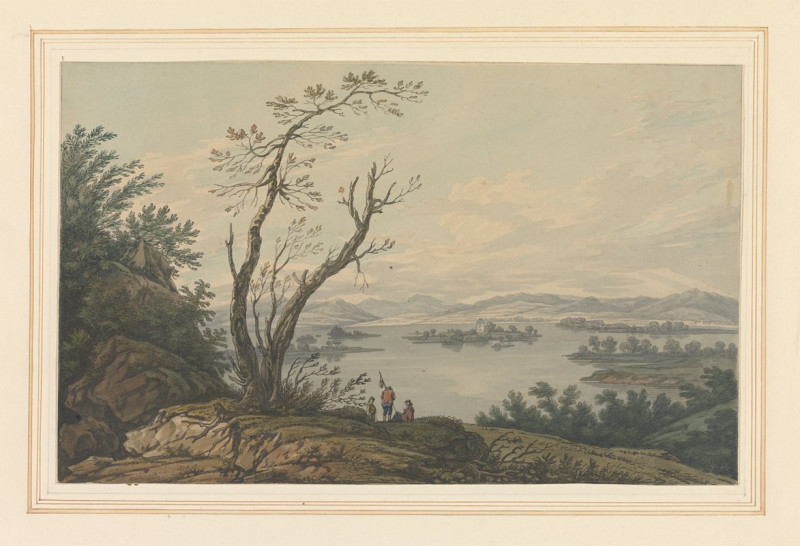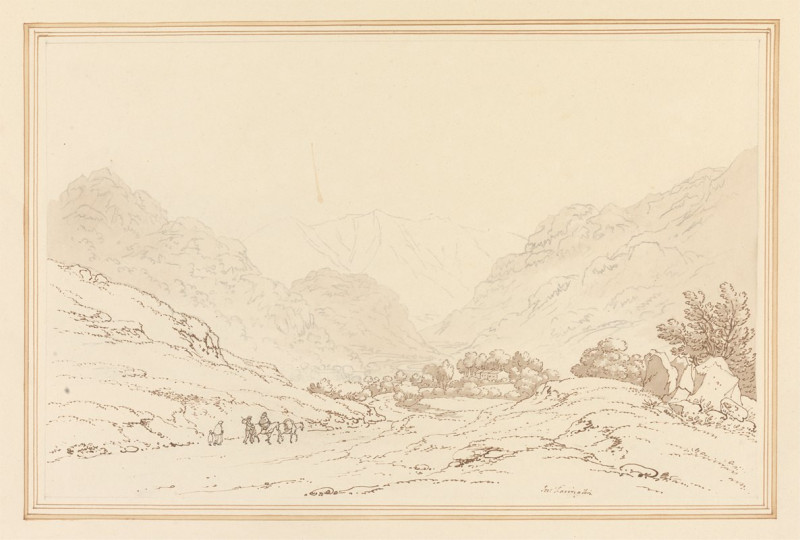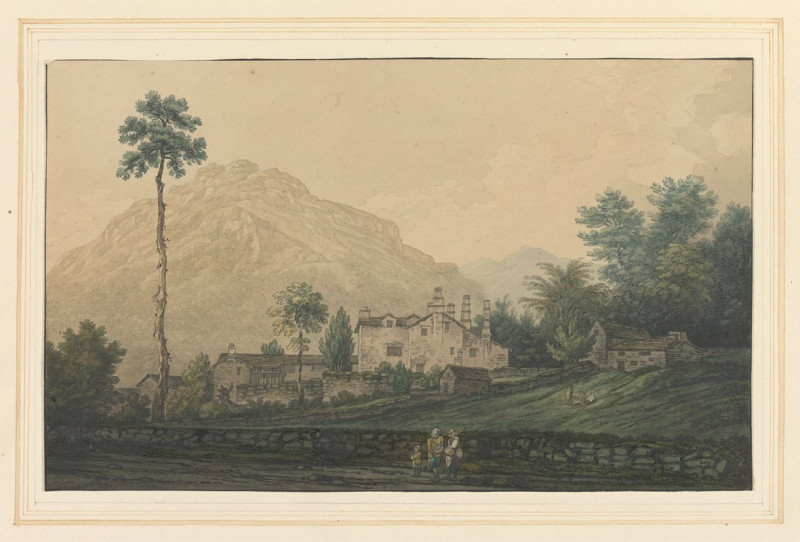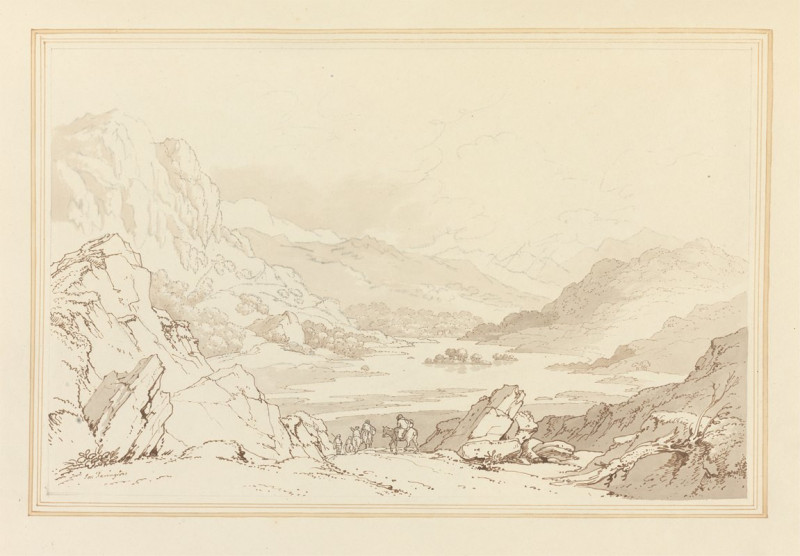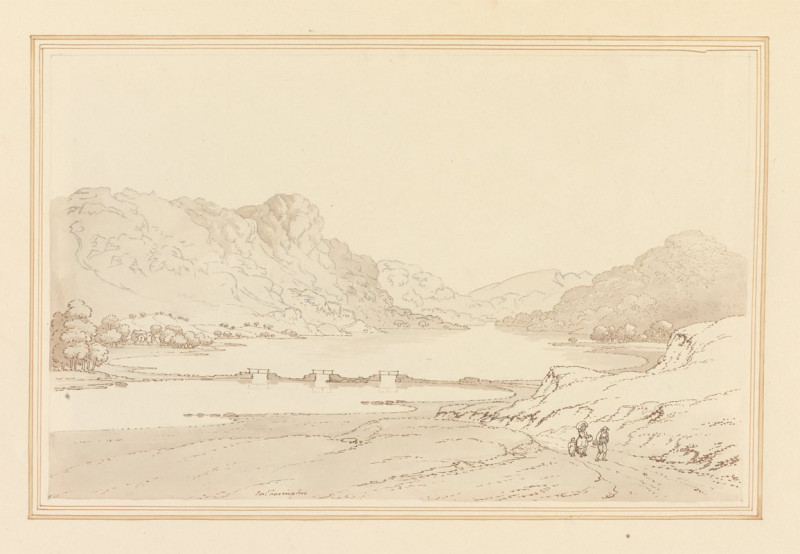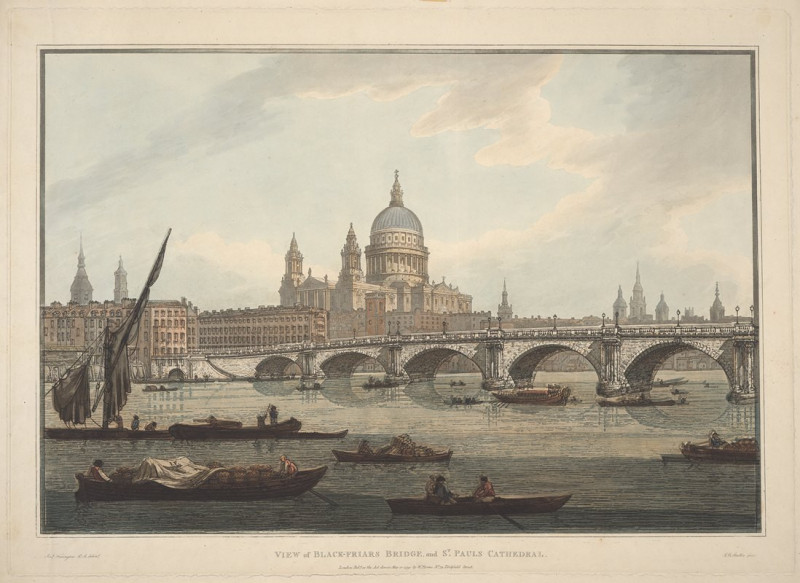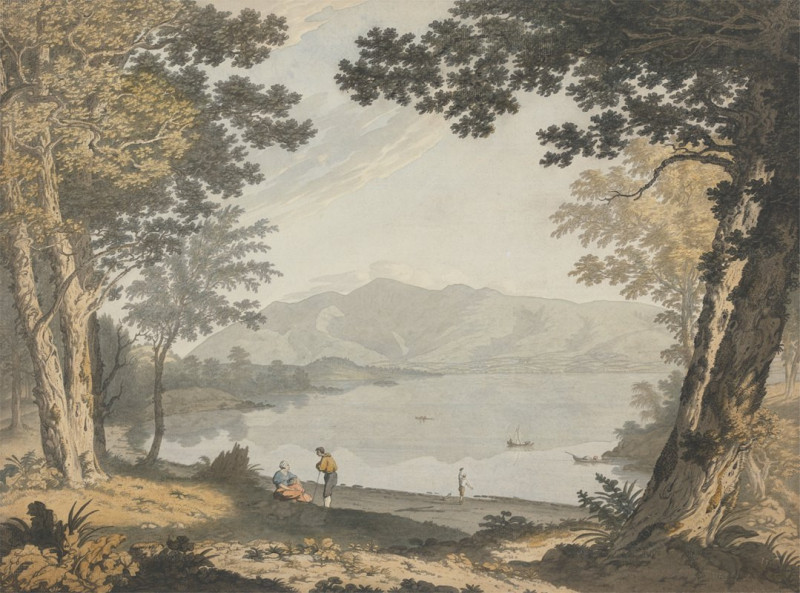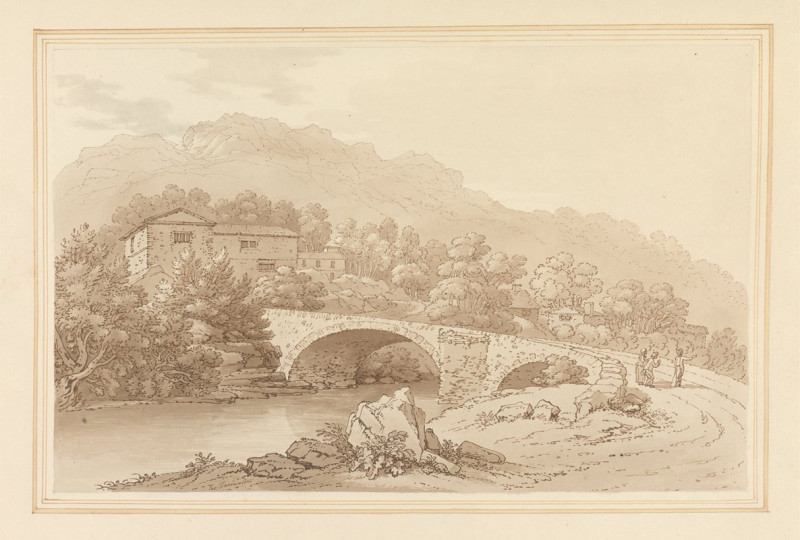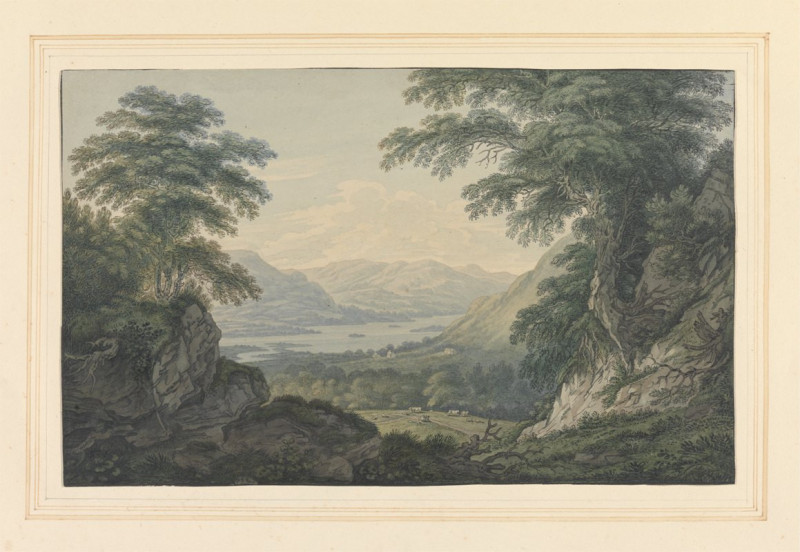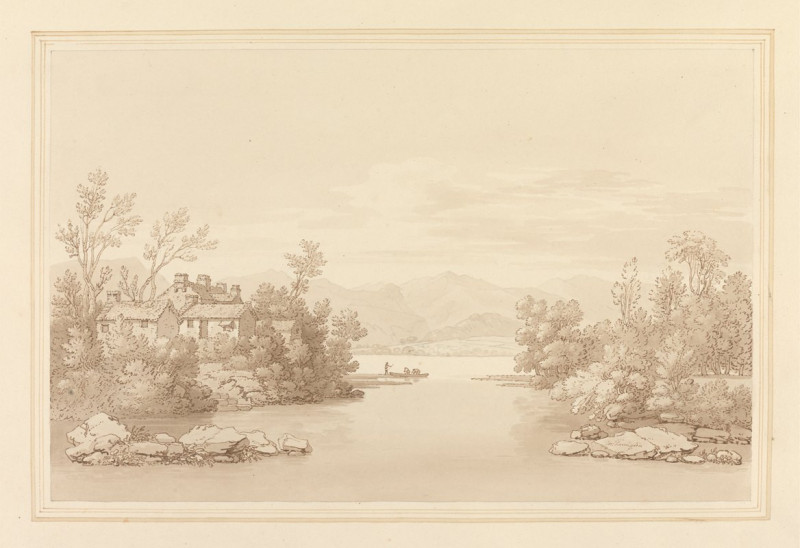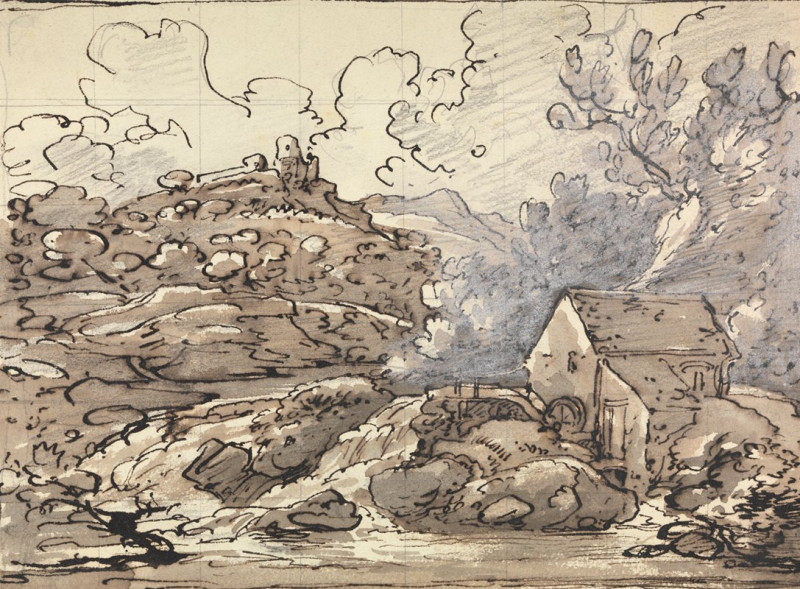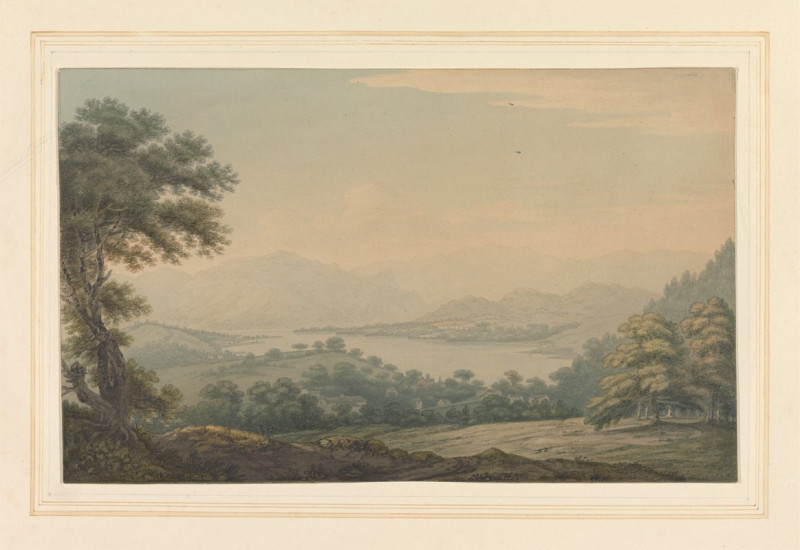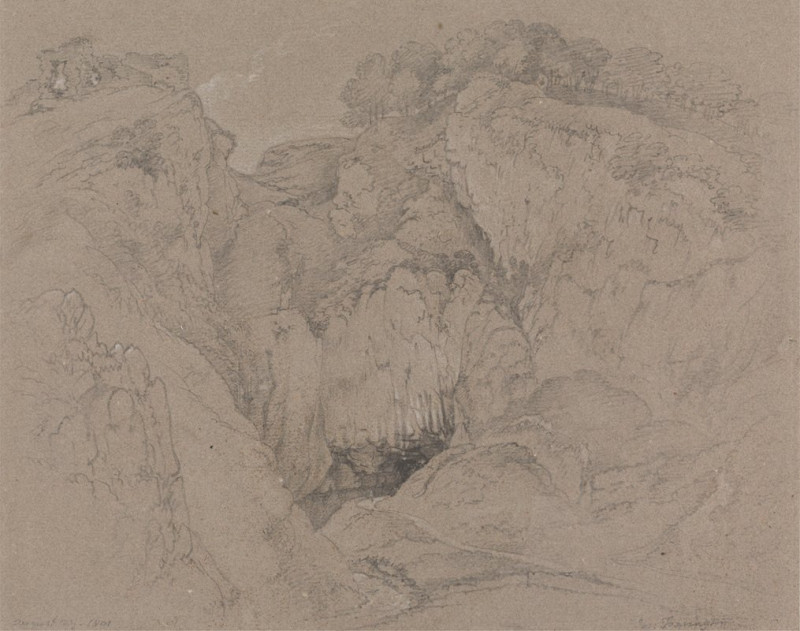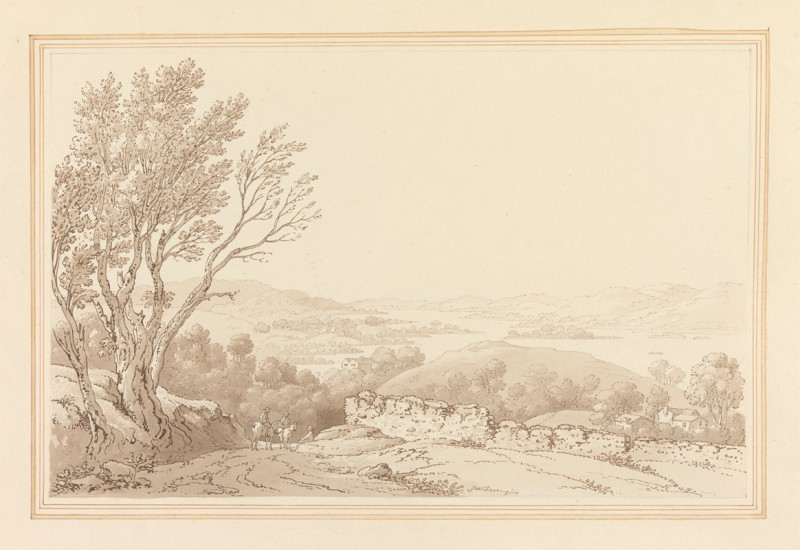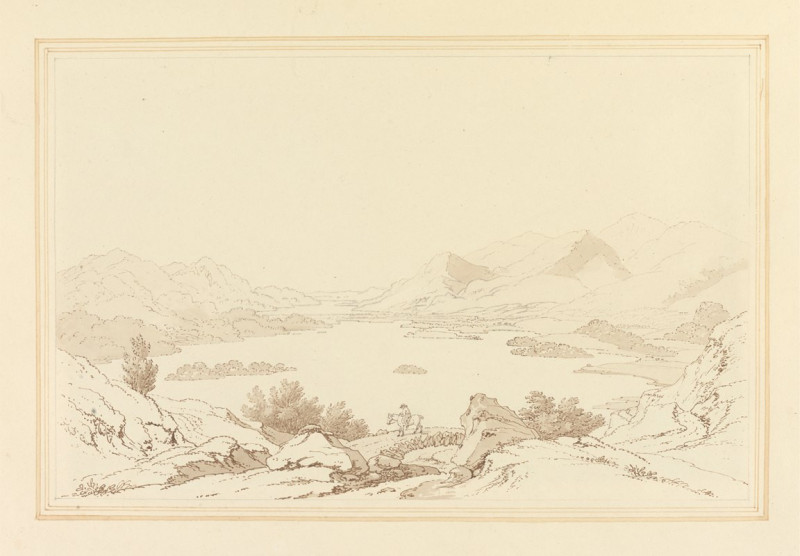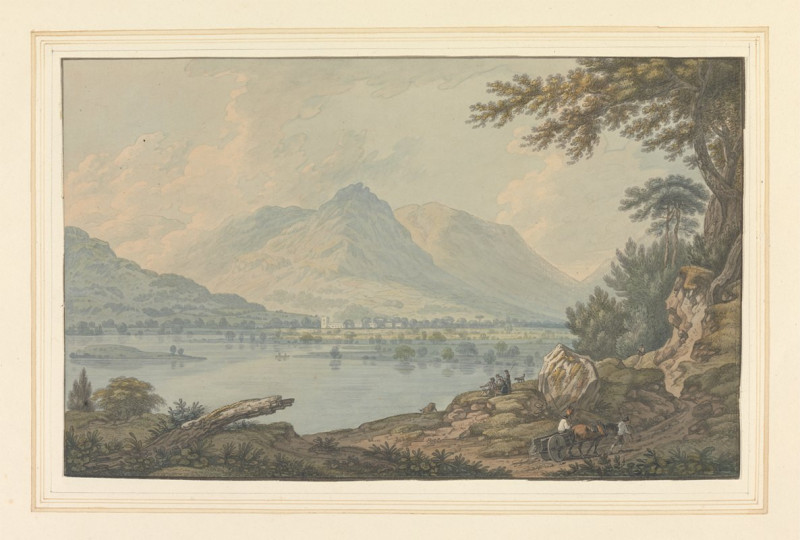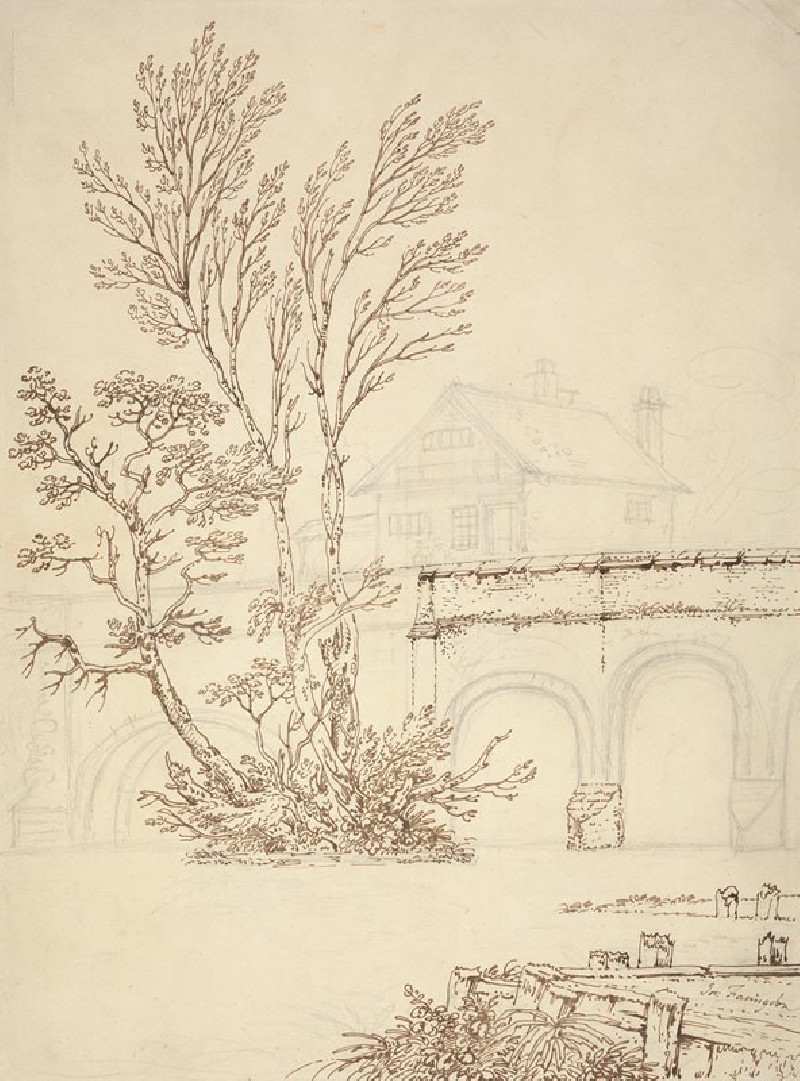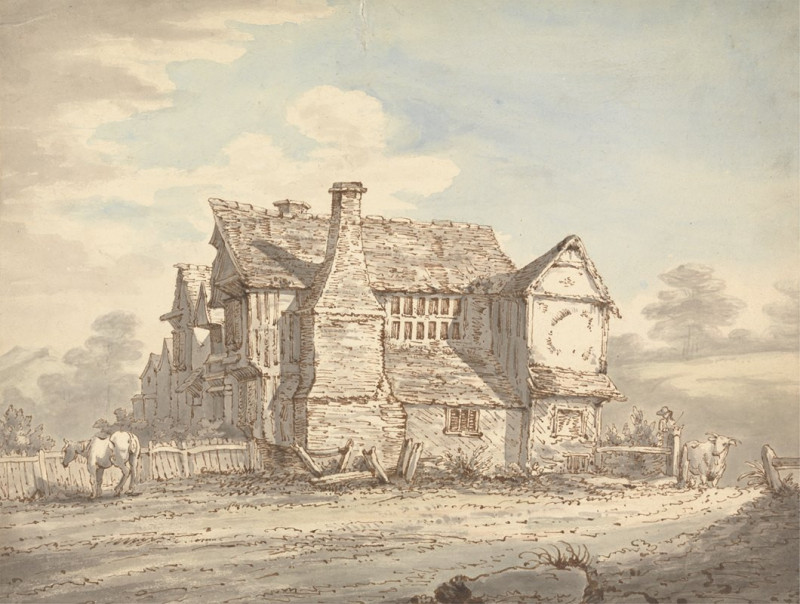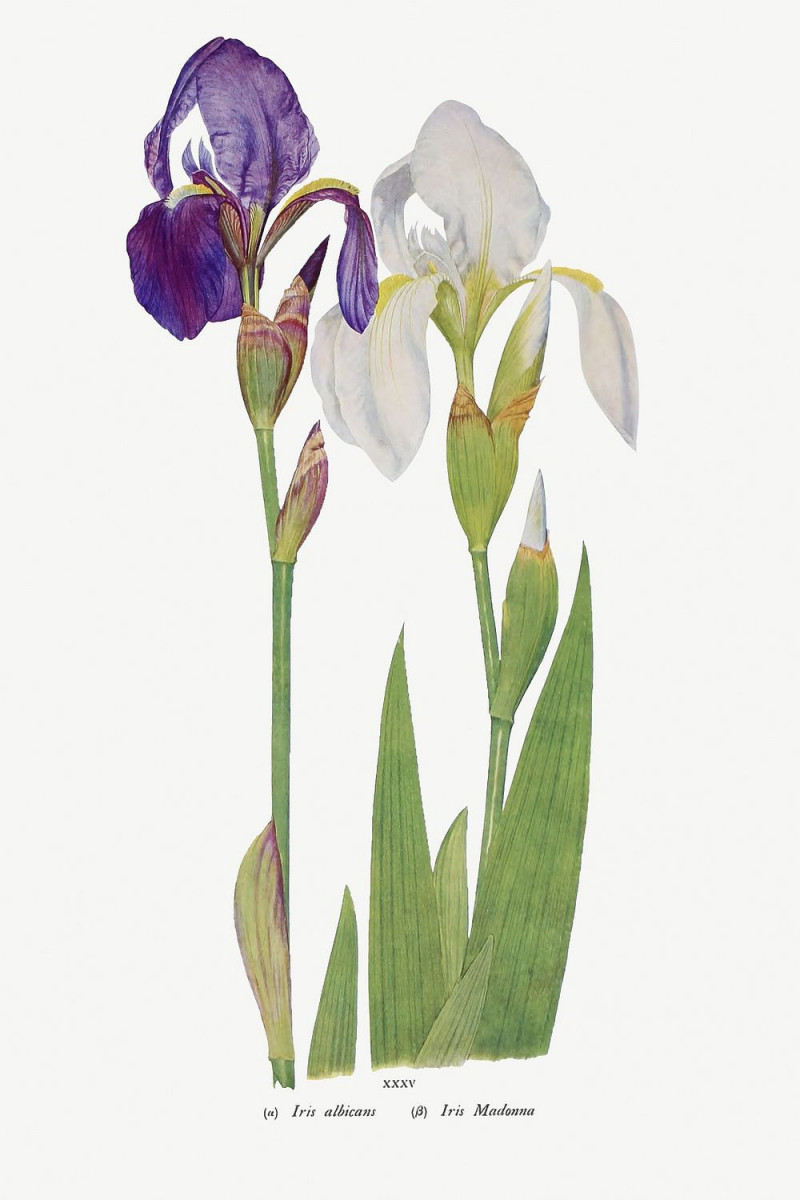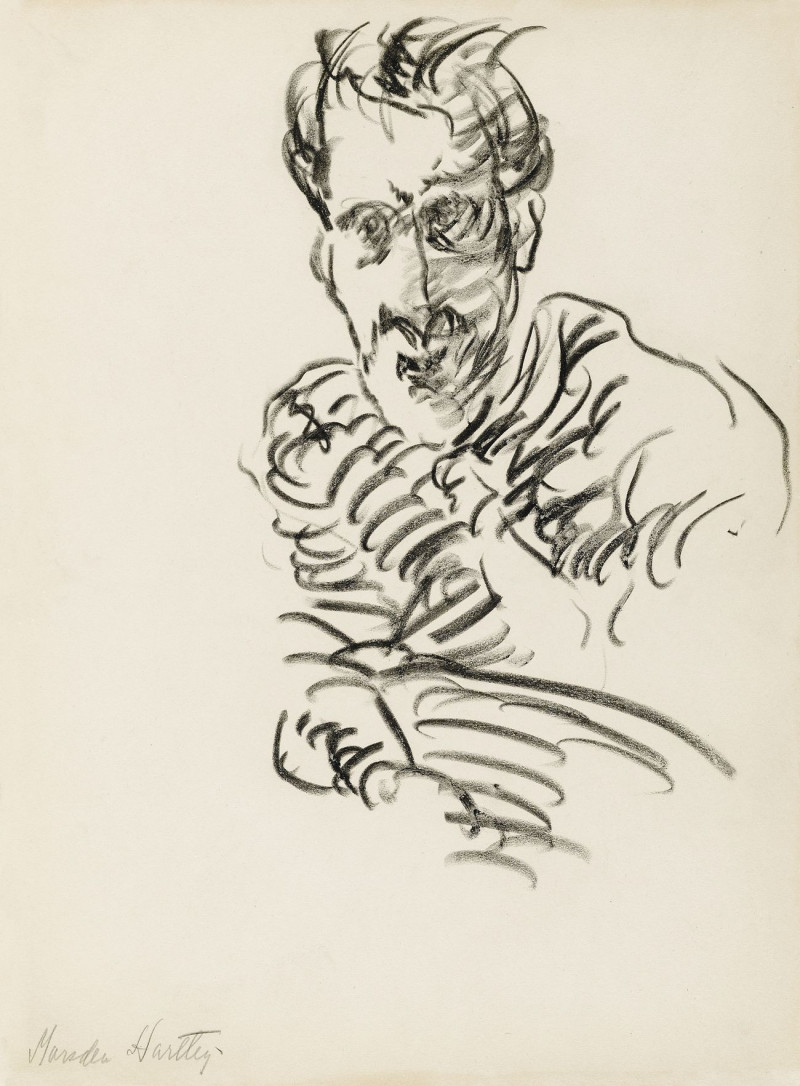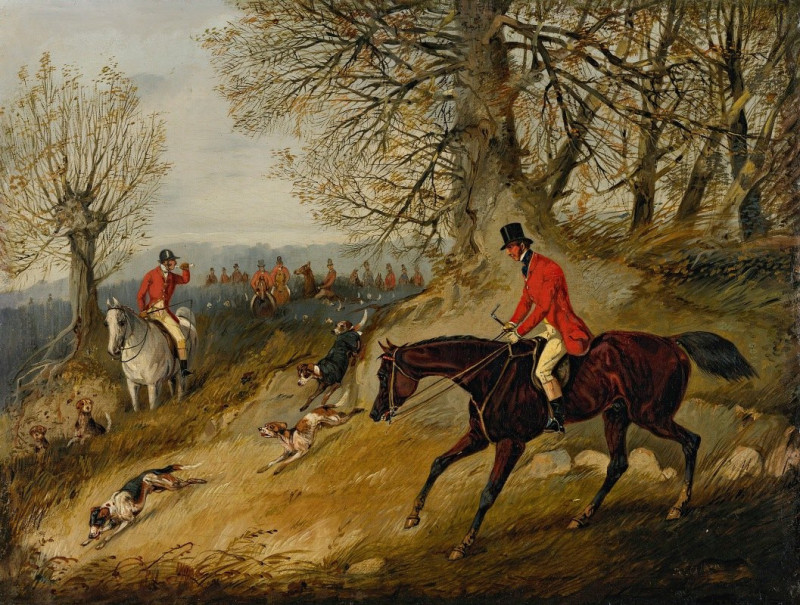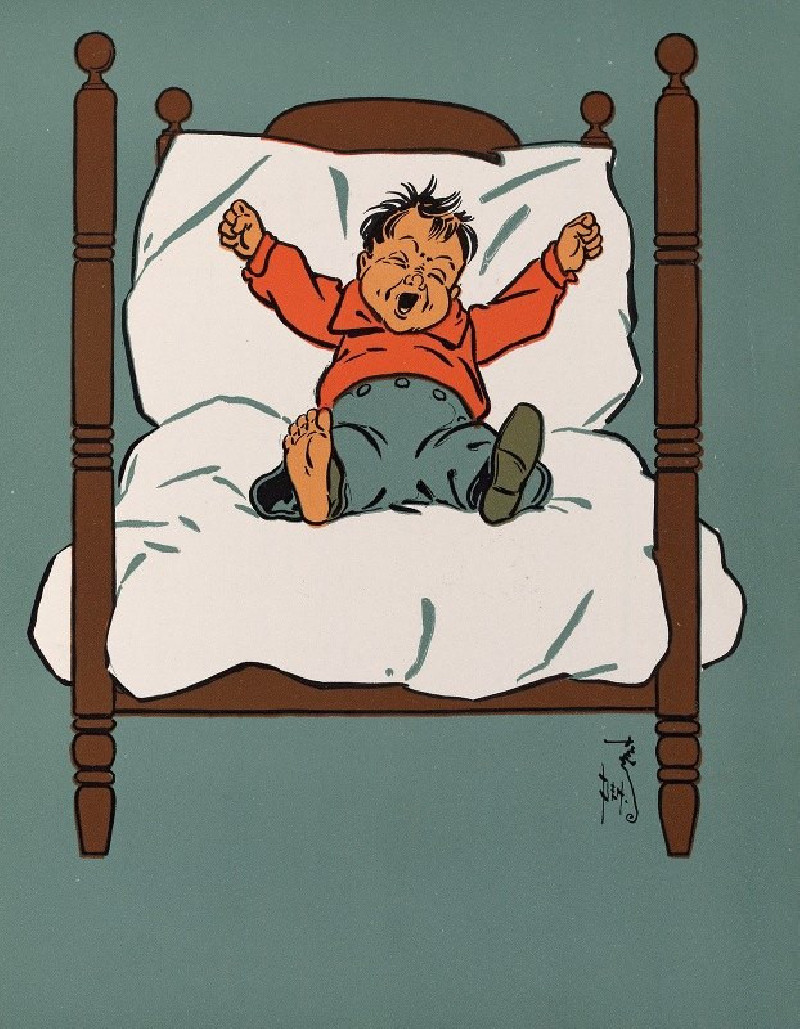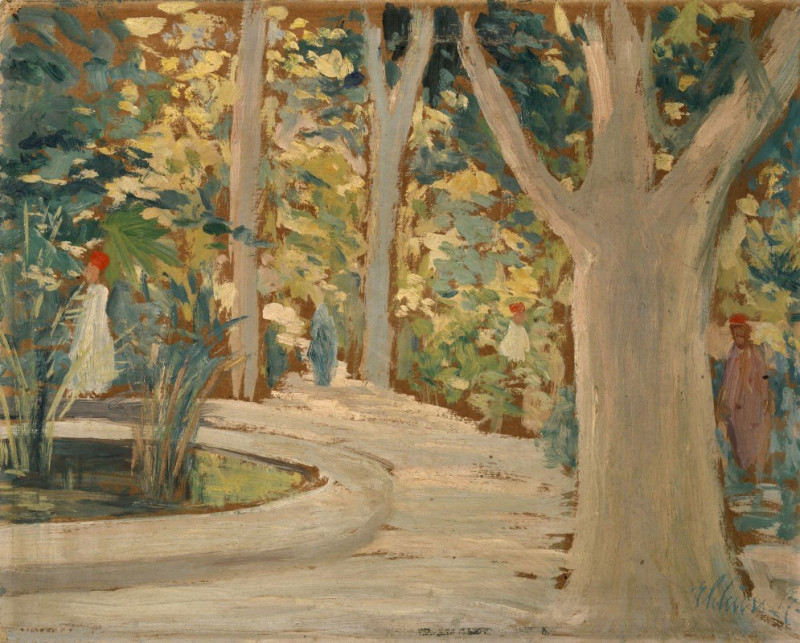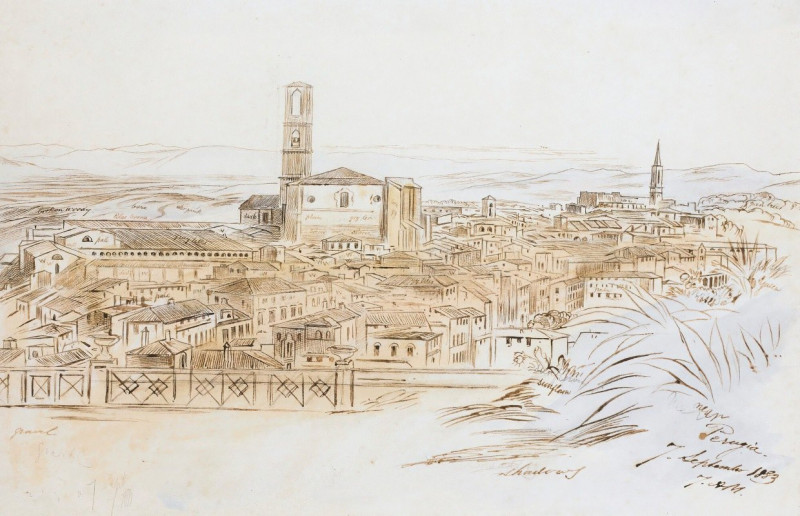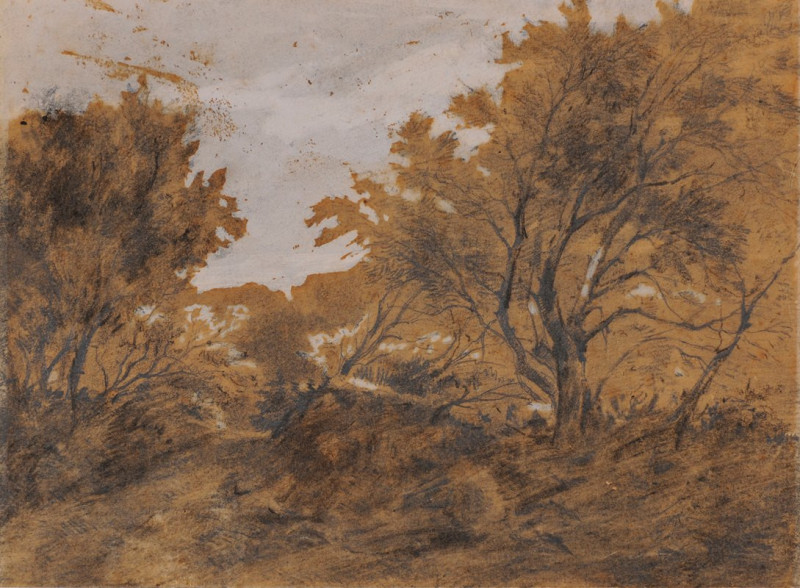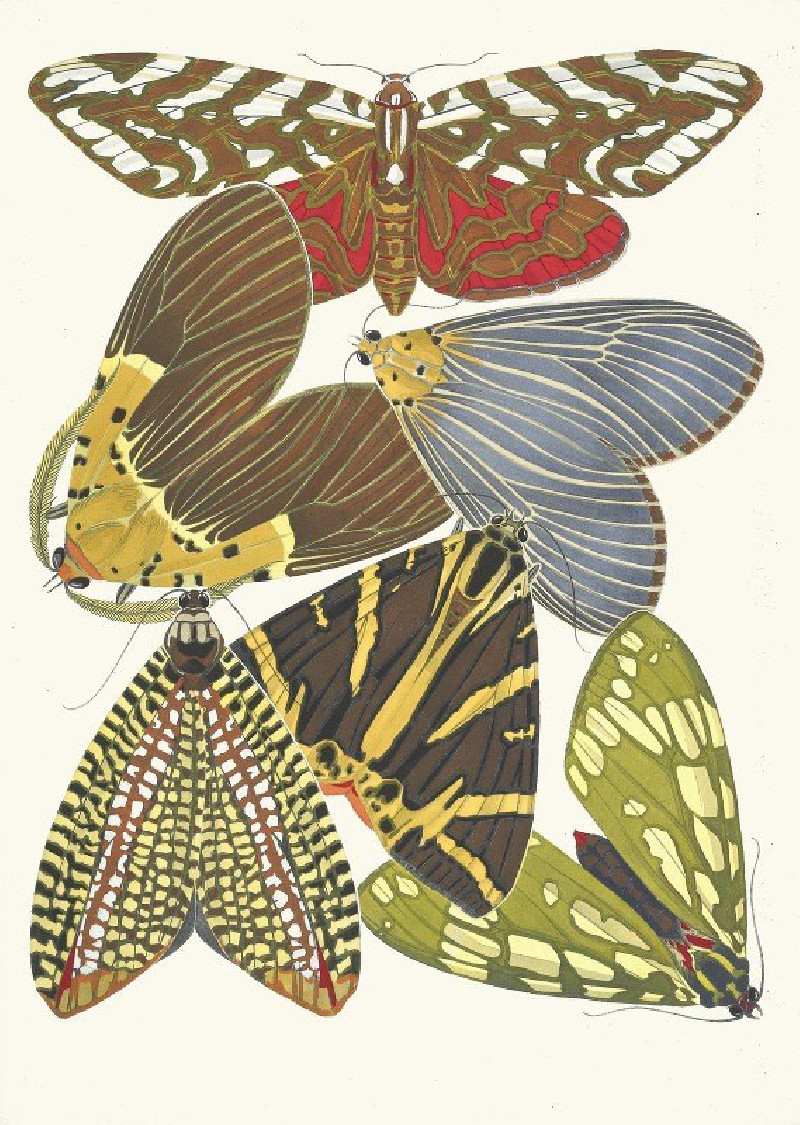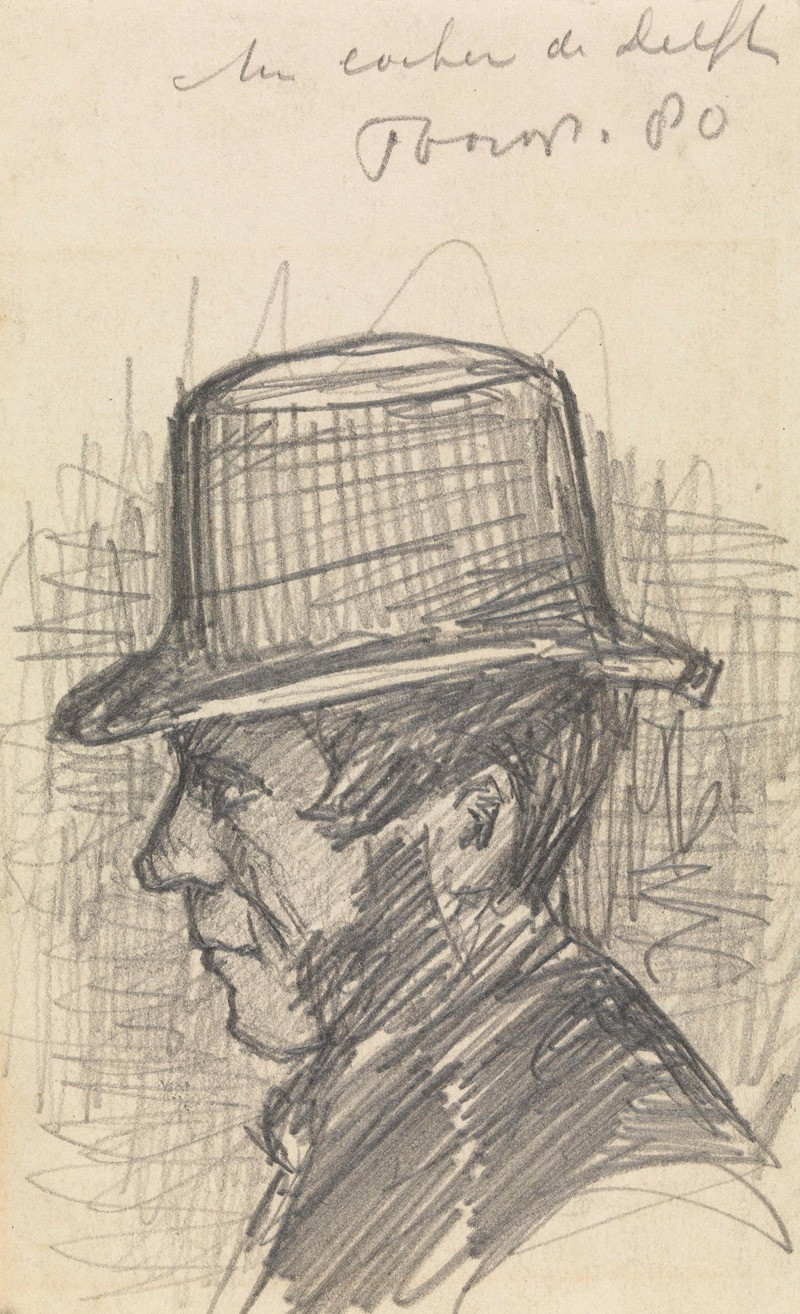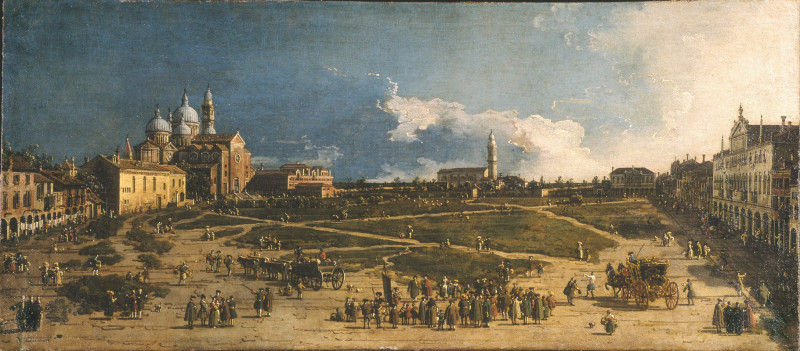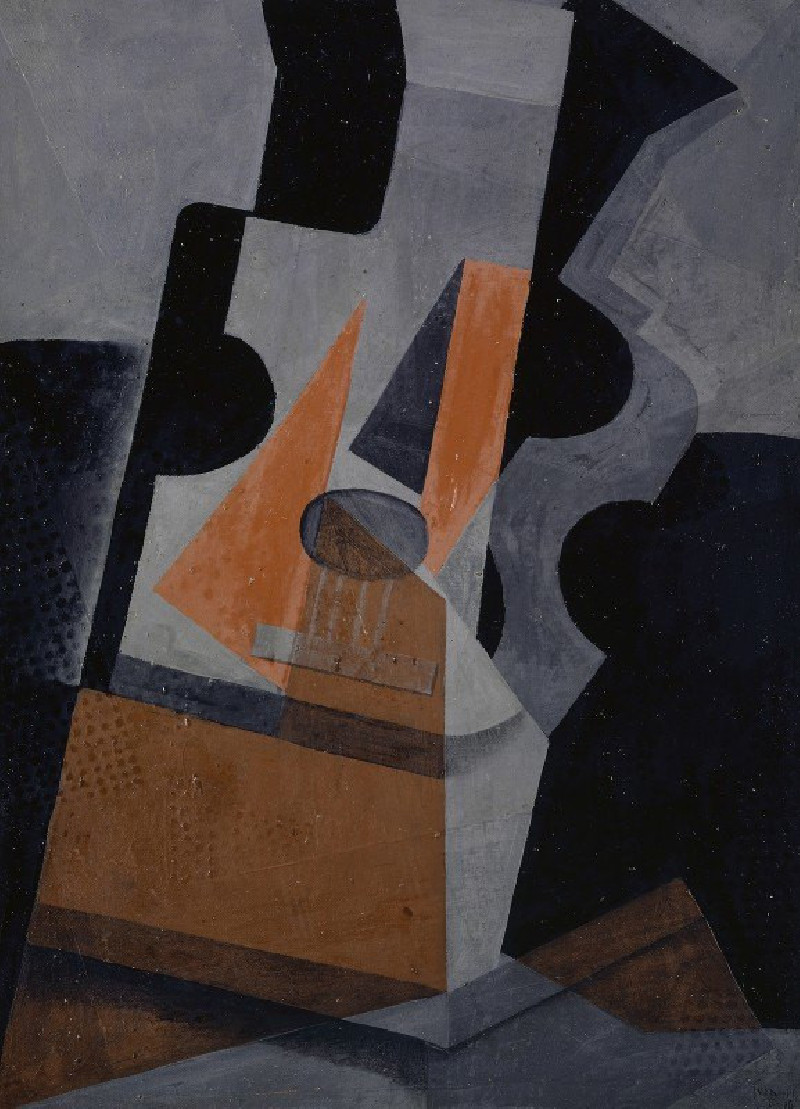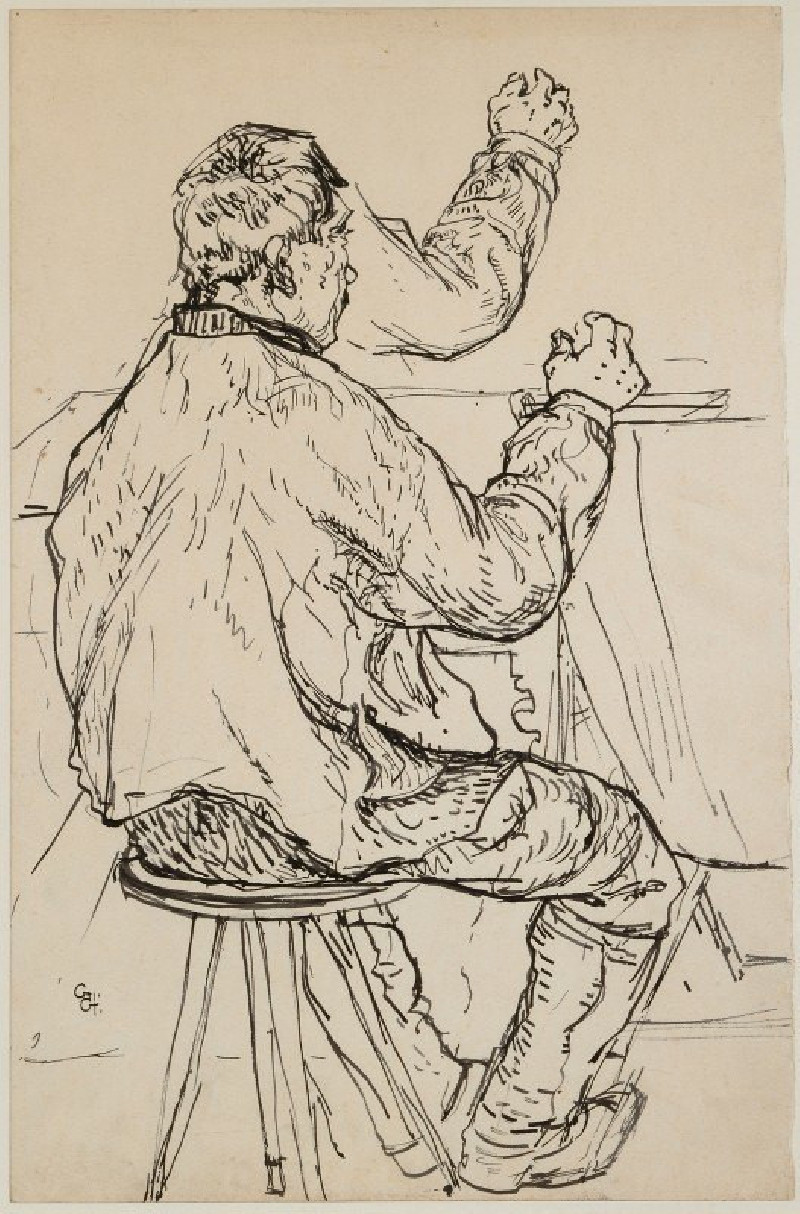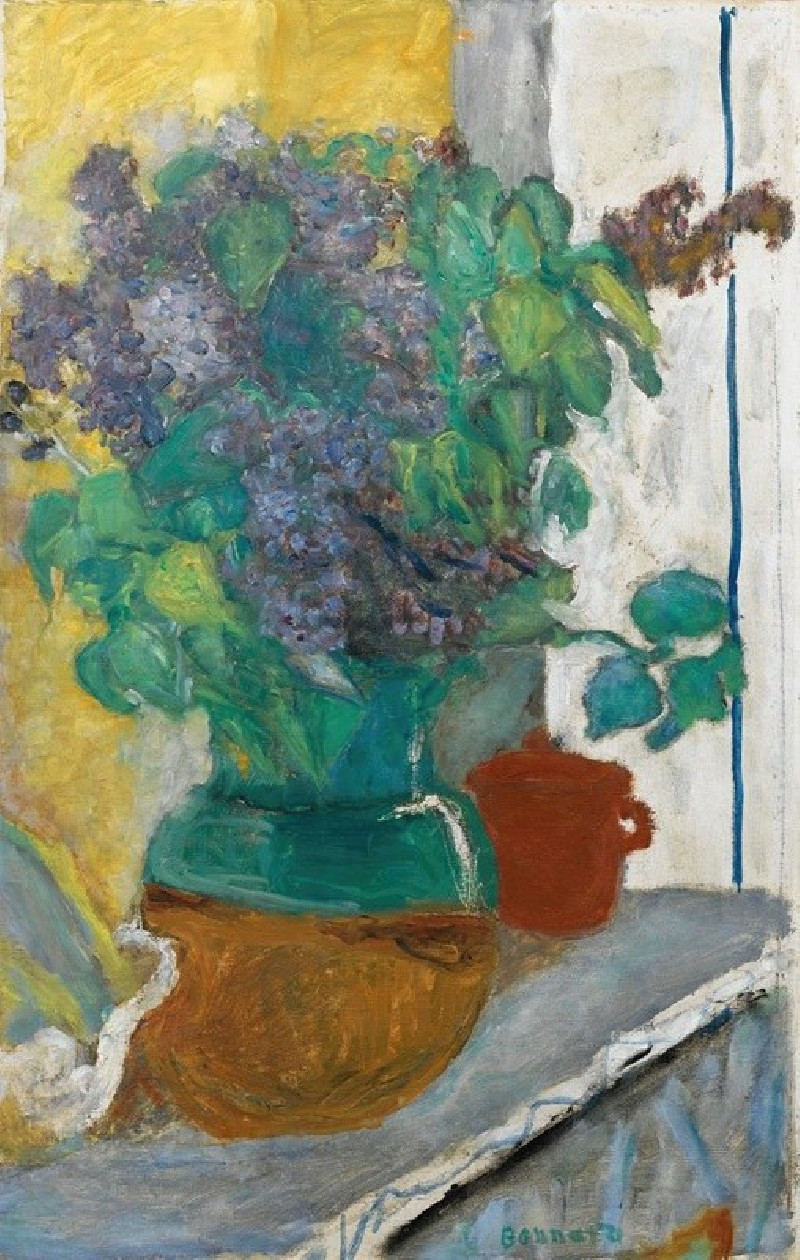Ambleside
Technique: Giclée quality print
Recommended by our customers
More about this artwork
Joseph Farington's delicate rendering in the artwork "Ambleside" captures the serene beauty of the English countryside with a masterful subtlety and attention to detail. Set in a picturesque landscape, this piece shows a tranquil water scene, nestled amidst lush, detailed foliage and rolling hills that recede into the gently sketched background.The eye is drawn to the elegantly leaning trees on the left, whose detailed branches slightly overhang the water, suggesting a quiet, secluded spot ideal for contemplation. The rocks scattered along the bank contribute to the natural ruggedness of the scene, while their textures are rendered in fine strokes, enhancing the overall sense of a peaceful retreat.In the distance, layers of hills create a sense of depth, leading the viewer's eye through the composition and into the far reaches of the landscape, characterized by a softer, more ethereal treatment. This perspective not only invites the viewer into the scene but also underscores Farington's skillful use of ink to create varying tones and textures, showcasing his ability to convey vast landscapes within the confines of a subtle palette."Ambleside" is a testament to Farington’s prowess in landscape art, reflecting his ability to capture the essence and tranquility of the English countryside.
Delivery
Returns
Joseph Farington RA was an 18th-century English landscape painter and diarist.
Born in Leigh, Lancashire, Farington was the second of seven sons of William Farington and Esther Gilbody. His father was the rector of Warrington and vicar of Leigh. Three of his brothers—William, Henry, and Richard—were "employed in the naval service of the East India Company". Edward died of yellow fever when he was 32. Robert attended Brasenose College and became vicar of St George in the East, London (whose advowson was held by Brasenose). George Farington became a painter, like Joseph himself.

